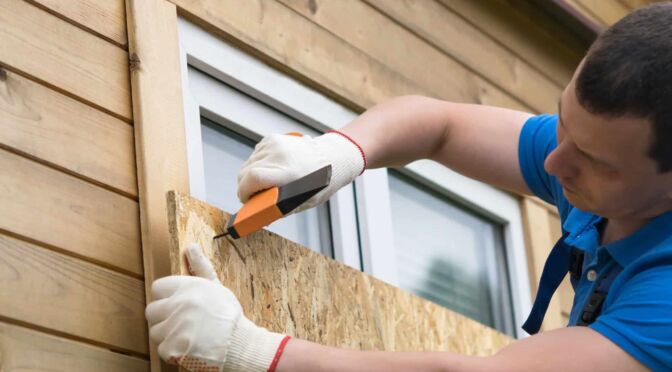
Hurricane season is here, which means there’s more to worry about than the high temperatures in some parts of the country. From South Padre Island, TX to Lubic, ME a hurricane can bring destructive high-force winds, storm surges and flooding. Needless to say, a storm could be catastrophic for the electricity grid and cut off energy supplies to thousands of people in one fell swoop.
Energy use is even more essential during an emergency, but it can also be dangerous or impossible to access before, during and after a hurricane. That’s why we want you to be prepared. Energy preparedness during hurricane season can help you avoid costly damage and unsafe situations that could cause an injury or worse.
Know Your Risks and How to React
Anyone living within a 30-minute drive of the Gulf Coast of Mexico or Atlantic Ocean is at high risk of experiencing the effects of a hurricane. A storm surge can go up to 25 miles inland from the coast causing damage along the way. And torrential rain doesn’t stop at the coastline. Flooding can happen hundreds of miles inland as rivers, creeks and lakes overflow from the added water.
If you live within a couple hundred miles of the coast you need to carefully assess your risks. Consider how close you are to any type of water. Another thing you want to think about is how prepared your community is to respond to a hurricane. Your proximity to resources like drinking water and gas is something else that can impact your ability to react after a storm hits. All of this information will help you create a plan for weathering any storm, regardless of whether the power goes out.
Have a Plan for Shutting Off Utilities
Do you know how to shut off electricity at the electrical panel? Do you know where the water main to your home is located? Do you know how to protect devices from damage when the electricity comes back on?
In terms of energy preparedness, the best thing you can do is have a plan for shutting off your utilities long before a storm forms in the Atlantic. You don’t want to spend precious time trying to figure out how to get things done as a storm approaches when you can do it in advance. For example, it’s good to know ahead of time that a wrench should be on your hurricane supplies checklist.
Your hurricane preparedness plan for shutting off utilities should include:
- Where the electrical panel is located.
- How to switch off power at the panel.
- Where the water main is located.
- Tools that may be needed to turn off the water main.
- Location of the main gas service shutoff valve (near meter).
- Location of shutoff valves for gas appliances.
- Which appliances and devices need to be unplugged.
- Backup power supplies in the event of a power outage.
- Contact numbers for the utility company, your energy supplier and local authorities.
How to Shut Off Power at the Electrical Panel
- Locate the electrical panel.
- Find the main breaker switch on the panel. It’s a double switch that’s usually somewhere near the top of the panel.
- Switch the main breaker to the off position.
- Check to make sure power is cut to the house.
How to Shut Off the Water Main
- Find the water main. It’s usually located in the ground near the street in front of the house in areas that don’t experience regular freezing. In colder climates it may be located in a crawl space, cellar or basement.
- Look to see what type of valve it has – either “wheel handle” gate valve or a “level handle” ball valve.
- Use a wrench to turn a ball valve 1 ⁄ 4 rotation so that the handle is perpendicular crossing over the pipe.
- Gate valves must be turned clockwise to shut off the water. You may need to turn the wheel a few full rotations.
- Turn on the water inside until it runs dry to drain the pipes.
How to Shut Off Gas
- Locate the main gas service shutoff valve. It’s usually located by the meter.
- Use an adjustable wrench to turn the shutoff valve to the left or the right.
- Position the lever so that it is perpendicular to the pipe crossing over it.
- Check to make sure the gas is shut off to appliances.
- Never turn the gas back on by yourself – call the gas company to do it for you.
Practice Shutting Off the Utilities
Knowing and doing are two separate things. Now that you know how to turn off the utilities it’s a good idea to do a practice run to make sure everything goes as expected. Find a time when you can shut off the electricity, water and gas (do a mock run of the gas since you can’t turn it back on yourself). Test to make sure that the utilities are completely shut off before turning them back on.
This trial run will allow you to see if there are any issues to anticipate and how you can work around them. It will also help you reduce the time it takes to get everything switched off in the event you have to evacuate in a hurry.
Get a Backup Generator
Many people in high-risk areas have already invested in a backup generator. A backup generator can be used to provide partial or complete power to a home whenever the electrical grid goes down.
Backup generators need a fuel source to provide power. Whole house generators typically tap into a natural gas line while portable generators use gas to operate.
Seriously consider investing in a backup generator if:
- There are elderly people, toddlers or babies living in the home.
- Power is needed for medical devices
- Medications require refrigeration.
- High heat and humidity could cause structural damage.
There are real safety concerns when you’re using a backup generator. The biggest thing to remember is that backup generators should never be placed inside. They need to be outside of the home, preferably at least 20 feet away from the structure.
Stock Up on Flashlights, Lanterns and Batteries
Lighting isn’t just a matter of convenience. It’s also a safety concern. If you don’t evacuate and the power goes out during a hurricane, flashlights and lanterns will be the only illumination you have. Follow these four tips and you should have enough lighting to get through the storm:
- Make sure you have at least one battery-operated light per person in your household.
- Check to see what kind of batteries each light takes.
- Have enough batteries on hand so that there are replacements for each light.
- Consider using LED flashlights and lanterns that emit more light using less power.
Solar-powered lighting is another option. However, fully charging solar lights may prove difficult during a hurricane when cloud coverage limits solar power generation.
At Spark Energy, we’re here for customers and ready to help if a hurricane is on the way. If you’re worried about electric service this hurricane season make the switch to Spark Energy and rest a little easier knowing you have a supplier that prioritizes your safety.
Use your zip code to see Spark Energy electric and gas plans that are currently available in your area!



